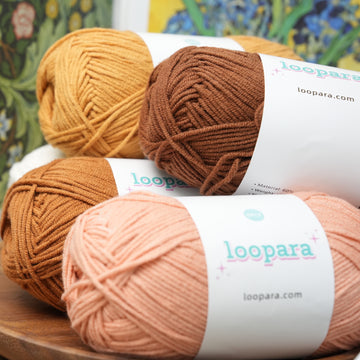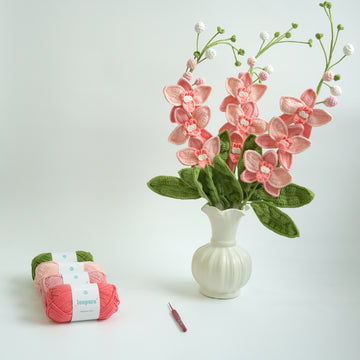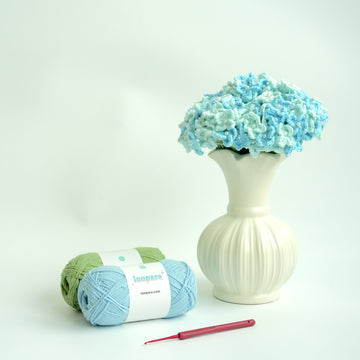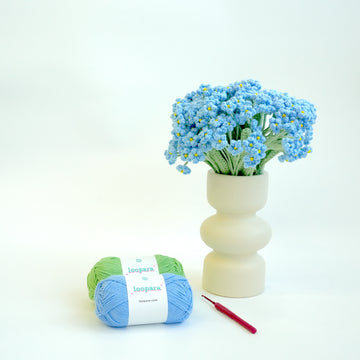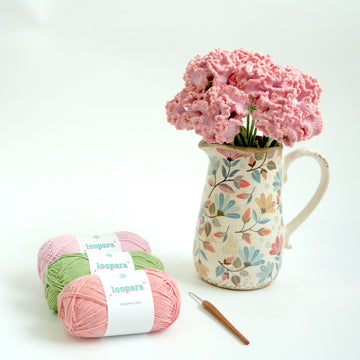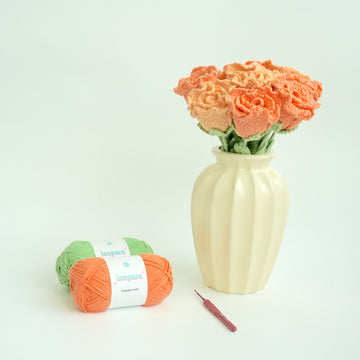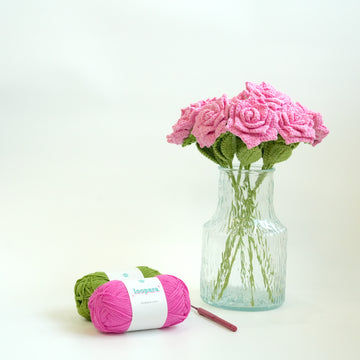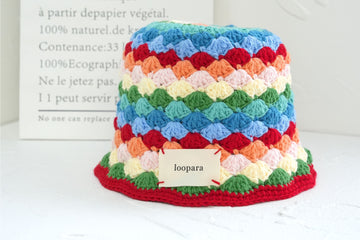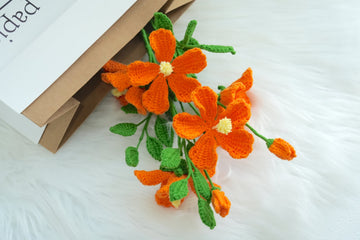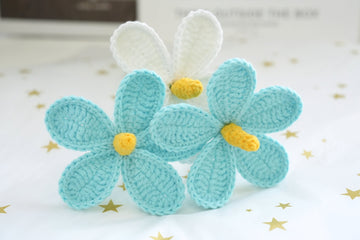Crochet isn’t just a fun pastime – it can also be a great way to make money. But to do that, you need to be able to find your customers.
We’re going to look at where to sell crochet items. We’ll look at options for in-person and on-line sales. And we’ll share some hints and tips for successful selling.
Ready? Then let’s get started on your selling journey.
What Crochet Items to sell?
Crochet is the quintessential handmade craft. No machine can create real crochet (for now at least). So that makes your crochet items special – and marketable.
Pretty much anything you can make you can sell. From garments to blankets, wall hangings to bookmarks, there’ll be people who want what you’re making.
But there are a couple of important caveats here:
- amigurumi – aka crocheted toys – are subject to labeling requirements if they’re sold in the UK or Europe
- designs protected by trademarks – if you use these without permission to make items for sale, you may find yourself subject to legal action.
Selling amigurumi
There are some important restrictions when it comes to selling amigurumi – crocheted toys.
Because toys are handled by children, special regulations apply. In the UK and Europe, any toys that are sold need to carry a label to show they’ve been tested and are safe for kids. In Britain, that’s the UKCA label. For Europe and Northern Ireland, it’s the CE label.
It doesn’t matter whether you live in the UK or Europe, or whether you’re a huge manufacturer or working at your kitchen table. If you’re selling toys in those markets, they need to be labeled.
That doesn’t have to be a barrier to selling amigurumi to UK or European customers. But you will need to make sure you comply with the labelling process. If you’d like to find out more about this, there’s a great Facebook group packed with information.
Selling trademarked or copyrighted items
You can’t sell anything featuring a trademarked design or that’s been copyrighted unless you have formal permission from the owner of the trademark or copyright.
The most obvious examples of this kind of thing are items featuring Disney or Marvel characters. You can make them for your own personal use. But if you try to sell them, you’re likely to end up receiving a letter telling you to stop. If you don’t, you can expect to be taken to court.
And it doesn’t make a difference where the pattern you’re using came from. If it was produced by the trademark owner, you’ve purchased the right to make the item for yourself or to give as a gift. But you haven’t got the right to make a profit from it.
Companies like Marvel and Disney have large and active trademark infringement departments. If you’re selling Ironman amigurumi at a yard sale, you may get away with it (or you may not). But if you’re selling on an online platform, you almost certainly won’t.

Selling crochet items in person
There are lots of different opportunities for selling crochet items in person. These will vary depending on where you live, but options to consider include:
1. Yard sales
yard sales are a great way of dipping your toe into selling your crochet creations. And while they might be small-scale, they can still give you helpful insights into what attracts people to your items.
2. Local craft shops
local craft shops may be open to stocking items from local producers. That’s especially likely to be the case if you live in an area that attracts tourists. Unless your best friends with the manager, you’re likely to need to pay the shop commission for using their space. But it can be a good option to get your wares in front of a bigger audience.
3. Local craft markets
these can be a great option, because you’ll be tapping into a market of people interested in crafts. And if it’s a good fair, they’ll hopefully be in a good mood and ready to spend some money! You’ll usually need to pay for your pitch, and fees can vary a lot. So think about how much you’d need to sell to make it worth your while before you sign up.
Online platforms to sell crochet
As more and more people have taken up crafting, opportunities to sell online have multiplied. Here are some to consider:
4. Your own website
If you want to avoid paying fees on every sale, selling through your own website can be a good option. But there are a number of things to consider:
- Marketing – you’ll need to be good at online marketing and SEO to get your website noticed. If you sell through an established online platform, that will be less important.
- Set-up and hosting fees – companies like Wordpress are making it easier than ever to set up your own website. But you’ll still need to pay a (usually small) hosting fee. The more bells and whistles your website has, the more expensive it can get. And if you want to draw on someone else’s expertise to create it for you, you’ll pay more again.
- Paperwork – if you’re selling through your own website, you’ll need to keep your own records of everything you sell. That’s in contrast to platforms like Etsy which can produce records for you to use in your tax return.
5. Social media
Using social media can be a good half-way house between setting up your own website and using a platform that charges commercial fees. They can also be a good way of connecting with an audience likely to be interested in what you have to offer.
Facebook groups are perhaps the best-established social media channels for selling. Groups like Ilovetocrocheta are designed specifically for people who want to sell their crocheted items. Or you can list items for sale using Facebook marketplace.
But if you’re more at home on other social media platforms, they can work well too. Good images of your products, and effective use of hashtags, can help you find customers who’ll love your work.

Online marketplaces
More and more platforms are springing up to connect sellers and customers. The operating models and fees vary from platform to platform, and they change over time. So for up-to-date information, check out their terms and conditions of use.
Here are some to consider:
6. Etsy
Online giant Etsy is perhaps the best known marketplace for funky, individual items. And it’s a natural stop for anyone searching for crocheted pieces. That means it gives you access to a huge market.
But – it’s also very competitive. A search for “crochet tote bag yellow” brings up over 1,000 results. If you add “flowers” into the description, there are still over 400 items. That can make it hard to stand out from the crowd.
Etsy also charges commission every time you list an item and whenever you make a sale.
7. Amazon Handmade
It was perhaps only a matter of time before Jeff Bezos’ online behemoth Amazon sought to tap into the crafting market. Amazon Handmade is the result, providing a channel for crafters to access Amazon’s vast marketplace.
It’s not just a case of signing up, though. You have to apply and be accepted. But unlike Etsy, there are no listing fees, just selling fees.
It seems not too many crocheters have caught on to this opportunity yet. A search for “crochet tote bag yellow” returned a more modest 778 items. Adding in “flowers” reduced the number to 172. And in both cases, the results included lots of bags that were neither crocheted nor yellow.
In short, you might find it easier for your products to get visibility over on Amazon Handmade – at least for now.
8. Ebay
The original online auction site, Ebay also allows you to set up a shop and list items at “Buy it now” prices. Its size brings similar pros and cons to Etsy. But with online marketplaces having to compete with each other too, Ebay has recently ended fees for private sellers.
That’s fine if you’re selling on a small scale. But there are rules about when you have to register as a business seller. This comes with additional requirements like accepting returns.
Business sellers can, however, access other features like performance data, postage discounts, and marketing and promotional tools.
9. Shopify
Shopify lets you open an online store with a range of benefits. You can incorporate features like a blog and size chart, offer gift cards, integrate with social media platforms, and allow your customers to use over 100 different payment gateways.
There’s a monthly fee to pay, which varies depending on the size of your business. There’s a free trial period before you’re charged, but at the time of writing it was short – just three days.
Where to sell crochet items: quickfire summary
There are lots of options for selling your crochet items, whether you want to sell online or in-person.
Yard sales can be a good place to start, while local craft shops and markets allow you to tap into an established audience. Online, you can go it alone with your own website, use social media, or sign up to one or more online marketplace.
Whatever option you choose, look into all the terms and conditions before you sign up. And make sure you understand the law about whatever you’re selling.
We wish you the best of luck with your crochet business!


